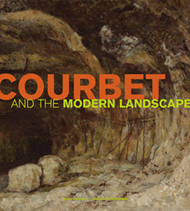Blizzard, Gladys S. Come Look with Me: Exploring Landscape Art with Children. New York: Lickle Publishing, Inc., 1996.
This work pairs well-known landscape paintings with thought-provoking questions, encouraging children to learn through visual
exploration and interaction. The text introduces the world and work of each artist, making the most of a child's natural curiosity.
Champa, Kermit S. The Rise of Landscape Painting in France: Corot to Monet. Manchester, N.H.: The Currier Gallery of Art, 1991.
The following sections and essays taken from this book were resources for the background information for this curriculum:
Richard R. Brettell's Introduction, Kermit S. Champa's The Rise of Landscape Painting in France, and Fronia E. Wissman's
The Generation Gap.
Kennet, Frances and Terry Measham. Looking at Paintings. New York: Van Nostrand Reinhold Co., 1978.
This book is designed to show children how to explore and talk about paintings. Readers discover how and why an artist
paints a picture. Several landscape paintings are included in the work, as are interactive activities that help children
understand complex painting techniques such as perspective.
Kent, Sarah. Eyewitness Art: Composition. New York: Dorling Kindersley Publishing, 1995.
This book is a children's guide to composition and the theory and balance of pictorial arrangement. Selected works, each
representing a key development in compositional technique, are studied in depth. The compositional features of these painting
are examined with the aid of easy-to-understand diagrams. The book includes a section titled "Landscape as Theater."
Mayer, Ralph. The Harper Collins Dictionary of Art Terms & Techniques. New York: Harper Perennial, 1991 (Second Edition).
This book contains over 3,200 clear definitions of terms encountered in the study and practice of visual arts. There are entries
on schools, styles, and periods, but the main emphasis is on the materials and methods of the artist.
Mora, Gilles. Photo Speak: A Guide to the Ideas, Movements, and Techniques of Photography, 1839 to the Present. New York:
Abbeville Press Publishers, 1998.
This book is a user-friendly reference, which provides easily accessible information about the diverse techniques used by
photographers since the medium was invented more than 150 years ago. It also addresses the ideas and the influences that have
been central to those making and interpreting photographs.

|
|
Morton, Mary and Charlotte Eyerman. Courbet and the Modern Landscape.
Los Angeles: J. Paul Getty Museum, 2006.
This book is the catalogue for the Getty Museum's exhibition Courbet and the Modern Landscape. It is useful in its
background information on Courbet's life and work, with a particular focus on his landscape paintings and his influence
on Post-impressionists and artists of the 20th century.
Sturgis, Alexander. Optical Illusions in Art. New York: Sterling Publishing Co., Inc., 1996.
Children discover how artists used clever illusions, called trompe l'oeil, for thousands of years to create images that
fool the eye into thinking a flat surface is really three-dimensional. Sections on perspective techniques highlight
landscape images and utilize diagrams to explain various techniques used to create depth in two-dimensional paintings.
Tansey, Richard G. and Fred S. Kleiner. Gardner's Art through the Ages. Fort Worth: Harcourt Brace College Publishers, 1996
(10th edition).
This text is popular art historical reference for survey courses in art history. It is a comprehensive guide to the defining
phases of the world's artistic traditions.
|
|||||||||||||||||||||||||||||||||||||||||||||||